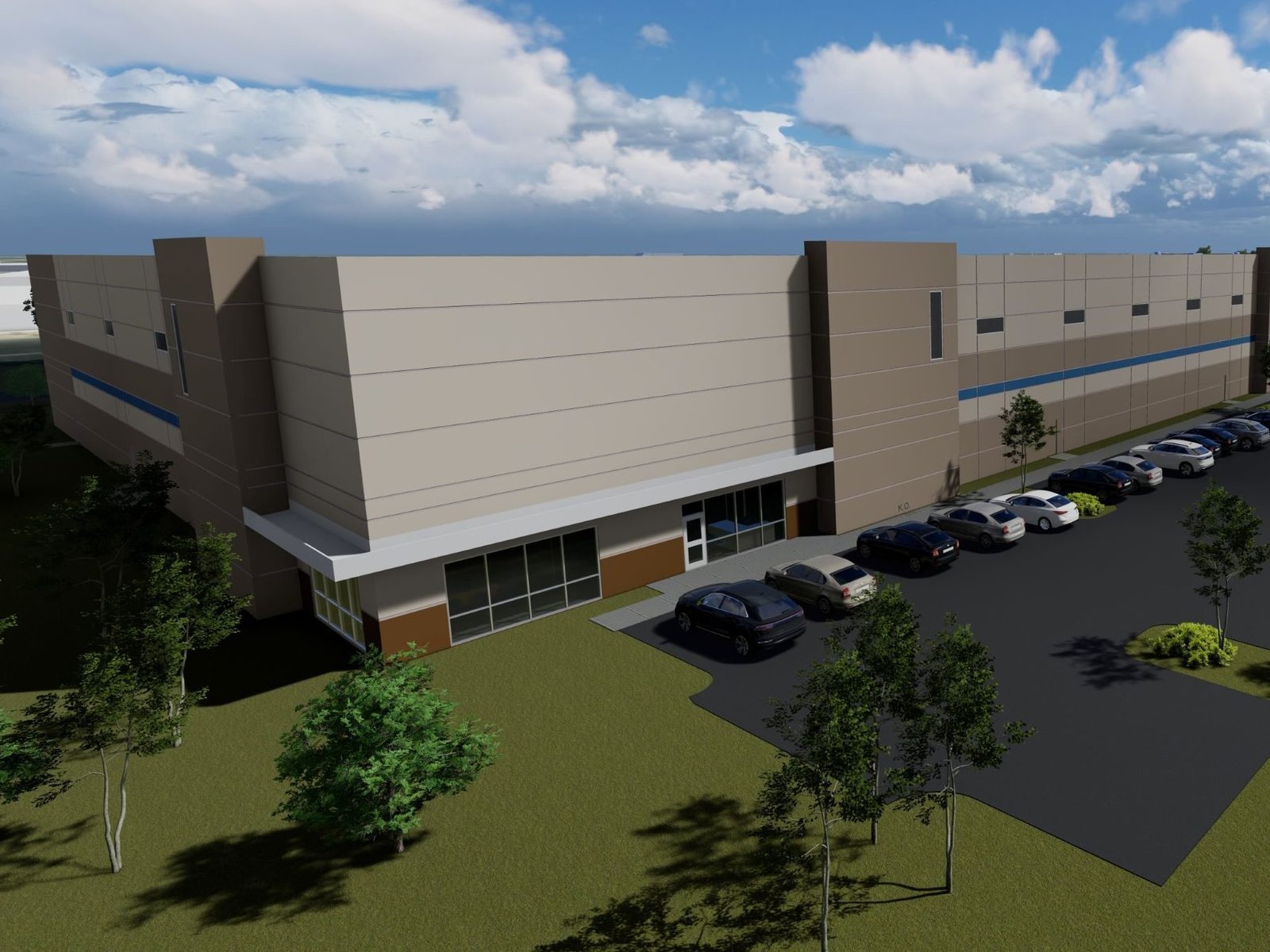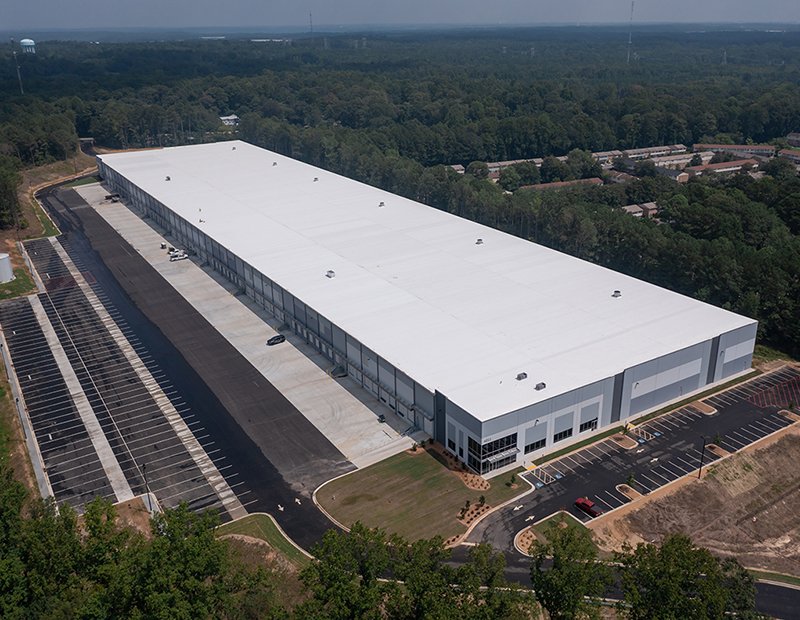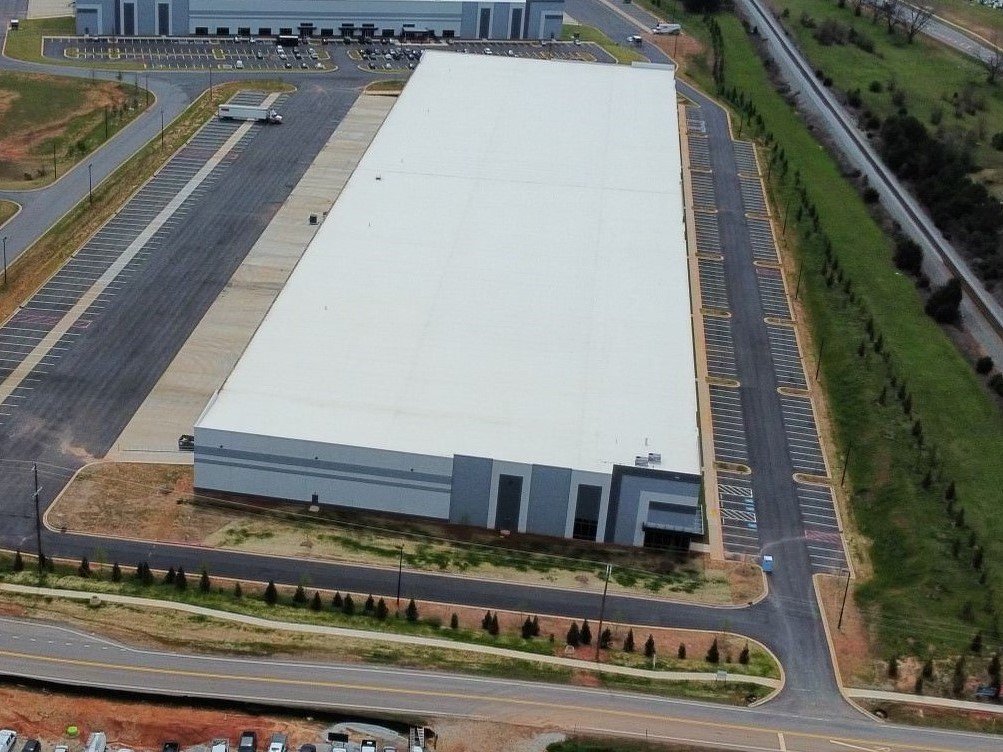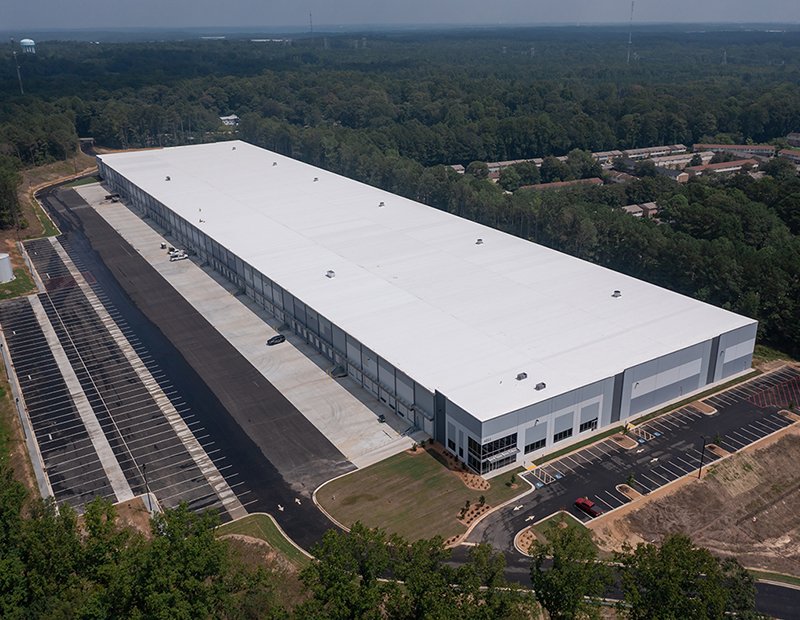
Atlanta stands as a dynamic hub for industrial development, its location and robust infrastructure making it an attractive destination for businesses seeking to capitalize on its logistical advantages. Atlanta’s industrial pipeline in the first quarter of this year was more than four times larger year-over-year, according to CommercialEdge information, reaching about 12.3 million square feet.
The metro is also home to several Fortune 500 companies, which drive demand for extensive logistics support, including warehousing, distribution centers, and transportation networks.
However, the metro faces some challenges, too. In March, EV manufacturer Rivian postponed the groundbreaking of its 16 million-square-foot plant in Stanton Springs, Ga. Production at the $5 billion project was initially supposed to start in 2026, with completion anticipated in 2030.
More industrial space underway in the metro

At the end of the first quarter, Atlanta’s industrial pipeline stood at roughly 12.3 million square feet across 26 projects—accounting for 2.2 percent of total stock—more than four times larger year-over-year. However, only five properties totaling less than 2 million square feet broke ground during the first three months of the year—accounting for 0.3 percent of total stock. This was on par with 2023’s first quarter.
Among peer markets, Atlanta’s industrial pipeline lagged behind Phoenix (10.3 percent of total stock) and Dallas (2.5 percent), but surpassed Chicago (1.0 percent), the Inland Empire (1.2 percent) and Indianapolis (1.1 percent).
In November, Andersen Corp. broke ground on a 638,000-square-foot manufacturing and distribution facility in Locust Grove, Ga. The $420 million project is part of the Renewal by Andersen division and is scheduled to come online later this year, with operations starting in 2025.
During the same month, Dermody Properties announced plans for LogistiCenter at Bright Star, a 181,000-square-foot industrial campus in Douglasville, Ga. Construction on the two buildings started earlier this year and delivery is anticipated by the second quarter of 2025. Additionally, the facilities are being built to meet LEED standards.
Completions are scaling down in Atlanta

In the first three months of the year, Atlanta saw a decline in industrial deliveries, with only 1.8 million square feet of space coming online, compared to 2.4 million square feet during last year’s same period. Only seven facilities were delivered, five less than in 2023’s first quarter.
Metro Atlanta had the fewest square feet to come online among comparable markets, with the Inland Empire (12.2 million square feet), Dallas (9.1 million square feet) and Phoenix (5.3 million square feet) taking the lead. In October, a joint venture between AEW Capital Management and Stream Realty Partners completed Union City Logistics Center, a 360,180-square-foot warehouse. Construction on the front-load facility started in September 2022.
Sale prices lower than the national figures
In terms of sales, Atlanta’s industrial sector registered $205 million in assets changing hands in the first quarter. Nationally, the sales volume during the same period reached $10 billion, the Bay Area taking the lead with almost $1.7 billion.
Facilities in metro Atlanta traded for an average of $113 per square foot as of March, CommercialEdge information shows, considerably lower than the $147 national average. The Inland Empire ($212 psf), New Jersey ($306 psf) and Dallas ($145 psf) are some of the markets that fared better, while Chicago ($97 psf) was at the opposite pole.

In February, Berkeley Partners sold a 141,481-square-foot, three-building industrial portfolio in Norcross, Ga. Unilev Capital acquired the assets completed between 1973 and 1978 for $18.2 million, or $128.6 per square foot.
Last October, multiple institutional investors advised by J.P. Morgan Global Alternatives acquired BlueLinx Atlanta IOS, a 585,637-square-foot distribution facility in Lawrenceville, Ga., for $40 million. Stockbridge Capital Group sold the asset for $68.3 per square foot after owning it for just two years.
Higher vacancy rate, but still under national average
Atlanta’s industrial vacancy rate as of March clocked in at 4.6 percent, 60 basis point lower than the national average, but 170 basis points higher year-over-year. Indianapolis (3.2 percent) and Phoenix (3.7 percent) posted the lowest vacancy rates, while the Inland Empire (6.0 percent) and New Jersey (6.1 percent) were some of the peer markets that fared worse.

Atlanta remained one of the cheapest large industrial markets at the end of the first quarter, with an average rent of $5.67 per square foot, a 7.8 percent increase year-over-year, but still $2.18 less than the national figure. The Orange County continued to lead the country with $15.44 per square foot, while Indianapolis ($4.60 psf) was at the other end of the spectrum.
In June last year, NVH Korea signed a 234,000-square-foot lease at Scannell Properties’ Gardner Logistics Park in Locust Grove, Ga. The acoustic and thermal management company will occupy the whole facility.
A month before, Boston Scientific Corp. also committed to 206,686 square feet at US Realty Advisors and Bain Capital’s to-be-completed campus in Johns Creek, Ga. The life science manufacturing and supply chain facility is being constructed on the site of a former State Farm campus.





